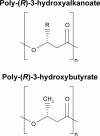Current development of biodegradable polymeric materials for biomedical applications
- PMID: 30288019
- PMCID: PMC6161720
- DOI: 10.2147/DDDT.S165440
Current development of biodegradable polymeric materials for biomedical applications
Abstract
In the last half-century, the development of biodegradable polymeric materials for biomedical applications has advanced significantly. Biodegradable polymeric materials are favored in the development of therapeutic devices, including temporary implants and three-dimensional scaffolds for tissue engineering. Further advancements have occurred in the utilization of biodegradable polymeric materials for pharmacological applications such as delivery vehicles for controlled/sustained drug release. These applications require particular physicochemical, biological, and degradation properties of the materials to deliver effective therapy. As a result, a wide range of natural or synthetic polymers able to undergo hydrolytic or enzymatic degradation is being studied for biomedical applications. This review outlines the current development of biodegradable natural and synthetic polymeric materials for various biomedical applications, including tissue engineering, temporary implants, wound healing, and drug delivery.
Keywords: drug delivery; natural biomaterials; synthetic biomaterials; tissue engineering; wound healing.
Conflict of interest statement
Disclosure The authors report no conflicts of interest in this work.
Figures









References
-
- Piskin E. Biodegradable polymers as biomaterials. J Biomater Sci Polym Ed. 1995;6(9):775–795. - PubMed
-
- Taylor P. Global Markets For Implantable Biomaterials [market report on the Internet] Massachusetts: BCC Research; 2015. Jan, [Accessed February, 2018]. [cited March 1, 2016] Available from: http://www.bccresearch.com/market-research/advanced-materials/implantabl....
-
- Barbucci R. Integrated Biomaterials Science. New York: Kluwer Academic/Plenum Publishers; 2002.
-
- Langer R, Vacanti JP. Tissue engineering. Science (New York, N. Y.) 1993;260(5110):920–926. - PubMed
-
- Vacanti JP, Langer R. Tissue engineering: the design and fabrication of living replacement devices for surgical reconstruction and transplantation. Lancet. 1999;354(Suppl 1):S32–S34. - PubMed
Publication types
MeSH terms
Substances
LinkOut - more resources
Full Text Sources
Other Literature Sources
Research Materials

